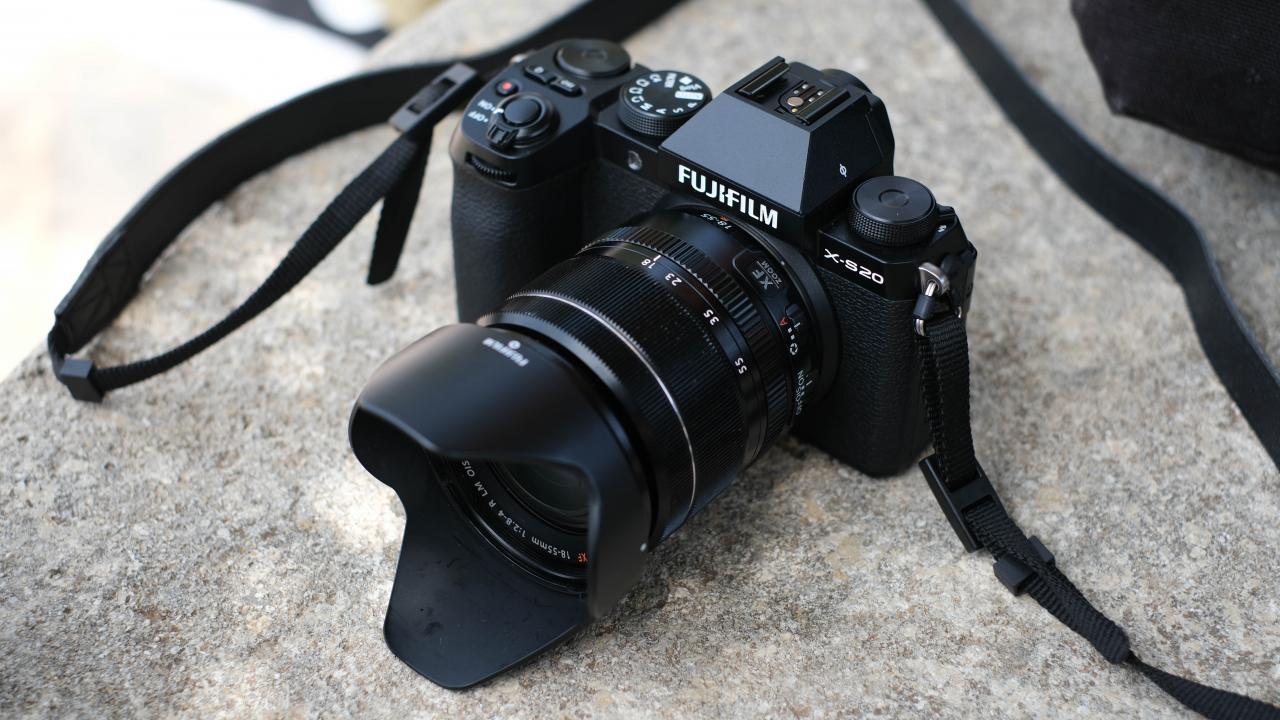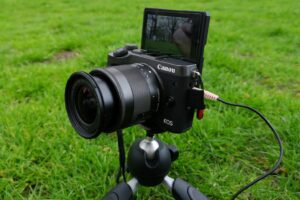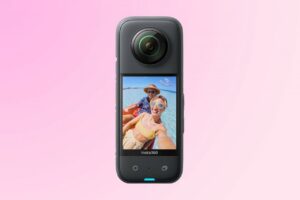Mirrorless camera for vlogging with good image quality is a hot topic right now. This guide dives deep into the world of mirrorless cameras, perfect for vloggers who want amazing visuals. We’ll explore the tech, compare different models, and give you practical tips to nail your vlogs.
From understanding sensor size and autofocus to choosing the right accessories and editing techniques, this comprehensive guide will equip you with the knowledge to capture stunning footage. We’ll cover everything from the basics of mirrorless cameras to advanced techniques for optimizing your vlogs for peak image quality.
Introduction to Mirrorless Cameras for Vlogging
Mirrorless cameras are rapidly becoming the go-to choice for vloggers seeking high-quality video recording. Their compact size and lightweight design, coupled with advanced image stabilization and fast autofocus systems, make them ideal for handheld shooting. This ease of use allows vloggers to focus on creating compelling content rather than fiddling with complex camera setups.
Mirrorless cameras excel in vlogging due to their impressive image quality, thanks to advanced sensor technology and image processing. These features, combined with a wide range of customizable settings, empower vloggers to capture stunning visuals that engage viewers.
Mirrorless Camera Technology for Vloggers
Mirrorless cameras eliminate the internal mirror found in DSLR cameras. This design significantly reduces the camera’s size and weight, allowing for more maneuverability and a more compact form factor. The absence of the mirror also results in faster autofocus systems, crucial for capturing fast-moving subjects in vlog settings. Moreover, the electronic viewfinder (EVF) or LCD screen provides a live preview of the image, giving vloggers immediate feedback on their shots.
Key Features for Vlogging with Mirrorless Cameras
Mirrorless cameras offer several features that cater to the specific needs of vloggers. These include:
- Fast autofocus: Accurate and quick autofocus systems are essential for capturing clear and sharp video of moving subjects, like the vlogger themselves or guests in a vlog setting. This allows for smoother transitions and a more dynamic feel in the video.
- High frame rates: The ability to record video at high frame rates (e.g., 4K at 60fps or 120fps) allows for slow-motion effects, which are increasingly popular in vlogs.
- Excellent image stabilization: Handheld shooting is common in vlogging. Effective image stabilization systems, such as in-body image stabilization (IBIS), help to minimize camera shake, resulting in smoother and clearer videos, even in challenging lighting conditions.
- Compact and lightweight design: This allows vloggers to easily carry the camera, shoot from various angles, and maintain stability during movement, which is critical in vlogging scenarios.
Mirrorless vs. DSLR Cameras for Video Recording
Mirrorless cameras offer significant advantages over DSLRs for video recording. The elimination of the mirror mechanism leads to a noticeably quieter operation during recording. Furthermore, mirrorless cameras generally have faster autofocus and more efficient image processing, resulting in smoother video playback and better responsiveness during recording. The compact design is a significant benefit for vloggers who need to be mobile and adaptable.
Comparison of Mirrorless Camera Types
| Camera Type | Sensor Size | Image Quality | Suitability for Vlogging |
|---|---|---|---|
| APS-C | Smaller sensor | Good image quality, often suitable for video in lower light | Excellent for beginners, budget-conscious vloggers, and vloggers who want a compact size |
| Full-frame | Larger sensor | Exceptional image quality, superior low-light performance | Ideal for professional vloggers and those aiming for high-quality visuals, especially in challenging lighting situations |
Factors Influencing Image Quality in Mirrorless Cameras
The quality of the final video depends on various factors within the camera. Key factors include:
- Sensor size: Larger sensors (e.g., full-frame) generally produce higher quality images with more detail and better low-light performance. Smaller sensors (e.g., APS-C) may offer a good balance of image quality and portability.
- Image processing engine: The camera’s processing capabilities affect the sharpness, color accuracy, and noise reduction in the video.
- Lens quality: High-quality lenses play a critical role in delivering sharp, clear images and videos. The lens’s ability to gather light and its optical design influence the quality of the final video.
- Video recording settings: Factors like resolution (e.g., 4K), frame rate, and bit rate all contribute to the final video quality and file size.
Image Quality Considerations
Choosing the right mirrorless camera for vlogging hinges significantly on its image quality. Factors like sensor size, resolution, and dynamic range directly impact the visual appeal and professional look of your videos. Understanding these technical aspects ensures you capture high-quality footage that’s both visually appealing and easily edited.
Sensor Size and Low-Light Performance
Sensor size plays a crucial role in image quality, especially in low-light conditions. Larger sensors gather more light, leading to improved image detail and reduced noise. This is particularly important for vlogging in dimly lit environments, as it allows for cleaner footage without excessive graininess. Smaller sensors, while offering a more compact and often more affordable option, typically struggle in low light, resulting in grainy or noisy images. For vlogging, a larger sensor will deliver smoother, more detailed videos, especially during interviews or scenes shot in cafes or outdoors at twilight.
Video Codecs
Different video codecs (e.g., H.264 and H.265) significantly affect file size and video quality. H.265, also known as HEVC, offers significantly better compression than H.264, resulting in smaller file sizes without sacrificing image quality. This is beneficial for storage space and efficient online video sharing. However, older equipment or software might not fully support H.265, leading to compatibility issues. The choice of codec depends on your storage capacity and the intended distribution method of your vlogs.
Autofocus Systems
Smooth and accurate autofocus is essential for vlogging, ensuring subjects remain in sharp focus throughout the video. Various autofocus systems are available in mirrorless cameras. Phase-detection autofocus systems are known for their speed and accuracy, while contrast-detection autofocus systems offer greater versatility and can work in a wider range of situations. Choosing a camera with a fast and reliable autofocus system ensures that your subjects remain in focus during dynamic shots and fast-paced vlogs.
Image Stabilization
Image stabilization technologies in mirrorless cameras are vital for handheld vlogging. They effectively reduce the blur caused by camera shake, resulting in smoother and more professional-looking videos. Optical image stabilization (OIS) uses lenses to compensate for movement, while digital image stabilization (DIS) processes the image to reduce blur. OIS generally provides better stabilization, and both technologies contribute to more stable footage when filming on the go.
Comparison of Mirrorless Camera Models
| Camera Model | Sensor Size | Resolution | Dynamic Range | Autofocus | Image Stabilization | Comments |
|---|---|---|---|---|---|---|
| Sony a7C | APS-C | 12.2MP | 14 stops | Excellent phase-detection | OIS | Excellent for vlogging, good low-light performance |
| Panasonic Lumix S5 | Full Frame | 20.0MP | 14 stops | Excellent phase-detection | OIS | Excellent video quality, suitable for professional vlogs |
| Canon EOS R6 | APS-C | 20.1MP | 13 stops | Excellent phase-detection | OIS | Good for vlogging, but some users report issues with autofocus in certain situations |
This table provides a basic comparison. Actual performance can vary depending on shooting conditions and individual preferences. It is essential to research and test different models before making a decision.
Practical Considerations for Vloggers
Choosing the right mirrorless camera for vlogging is only half the battle. Mastering the practical aspects of video recording, lighting, and composition is crucial for creating engaging and high-quality vlogs. This section delves into the key considerations that will elevate your vlogging experience.
Video Recording Settings
Proper video recording settings are essential for achieving crisp, clear footage. Understanding frame rate and bit rate directly impacts the quality and playback of your videos.
- Frame Rate: The frame rate dictates how many frames per second your video displays. Higher frame rates, like 60fps or 120fps, result in smoother, more cinematic-looking footage, especially beneficial for action-packed vlogs or videos with fast-paced editing. Lower frame rates, like 30fps, might be sufficient for more static content, but you’ll have less room for creative editing. Consider the type of content you’ll be filming when making this decision.
- Bit Rate: The bit rate determines the amount of data used to encode your video. Higher bit rates result in better image quality and fewer artifacts, but require more storage space and processing power. Choosing the right bit rate depends on your storage capacity and desired quality. A higher bit rate is generally recommended for vlogs requiring professional-grade quality, especially if you plan on uploading to high-resolution platforms.
Lighting and Composition
Lighting and composition significantly impact the overall aesthetic and clarity of your vlogs. Good lighting ensures your subject is well-lit, while proper composition keeps your videos visually engaging.
- Lighting: Natural light is often ideal for vlogs, offering a soft, even illumination. However, you might need supplementary lighting, such as LED panels or softboxes, in low-light situations or to create specific lighting effects. Experiment with different lighting setups to find what works best for your style and environment. Properly positioned lights can dramatically enhance your video’s clarity and visual appeal.
- Composition: Employing the rule of thirds, leading lines, and other compositional techniques can significantly improve the visual appeal of your vlogs. Experiment with different camera angles, shot types (close-ups, wide shots), and perspectives to maintain viewer interest.
Handling Different Shooting Environments and Lighting Conditions
Adapting to different environments and lighting conditions is crucial for consistently producing high-quality vlogs. Understanding how to optimize your settings for various situations will make your workflow much smoother.
- Outdoor shooting: Adjust your camera’s settings to account for varying sunlight intensities. Use a higher ISO setting to compensate for lower light levels and potentially add a neutral density filter for brighter conditions. Pay close attention to the direction of the sunlight to ensure it’s not causing harsh shadows on your subject.
- Indoor shooting: Indoor environments often require more careful lighting control. Use supplemental lighting to fill in shadows and ensure even illumination. Experiment with different light positions and intensities to find the optimal setup for your vlogs.
Optimizing Image Quality in Various Lighting Conditions
Properly adjusting your camera settings based on the available light will ensure optimal image quality.
- Bright Sunlight: Reduce the ISO, use a lower aperture, and possibly a neutral density filter to avoid overexposure. Pay attention to the direction of the light to minimize harsh shadows.
- Low-Light Conditions: Increase the ISO, use a wider aperture, and potentially employ a tripod to maintain stability. Consider using a higher frame rate for smoother footage if your scene permits.
White Balance Settings
White balance ensures accurate color representation in your vlogs. Using the correct white balance setting is critical for achieving consistent color throughout your footage.
- Auto White Balance (AWB): A good starting point, but may not always be accurate. Consider using a custom white balance setting if the auto setting doesn’t produce the desired results.
- Presets (e.g., Daylight, Cloudy): These settings offer a starting point for specific lighting conditions, but you might need to fine-tune them based on the specific environment.
Common Vlogging Scenarios and Recommended Camera Settings
The following table provides a guide to common vlogging scenarios and recommended camera settings:
| Vlogging Scenario | Frame Rate | Bit Rate | White Balance | Lighting |
|---|---|---|---|---|
| Outdoor interview | 30fps | 100 Mbps | Auto/Daylight | Natural light |
| Product review in a well-lit room | 60fps | 150 Mbps | Auto/Daylight | Fluorescent/LED lights |
| Vlog with a lot of movement | 60fps | 150 Mbps | Custom | Mixed ambient/LED lighting |
Specific Camera Models and Reviews
Picking the right mirrorless camera for vlogging hinges on a balance of image quality, features, and your budget. This section dives into specific models, highlighting their strengths and weaknesses regarding image quality, and compares their performance in real-world vlogging scenarios.
Choosing a mirrorless camera for vlogging goes beyond just resolution. Factors like low-light performance, dynamic range, and video capabilities significantly impact the quality of your footage. We’ll examine these aspects for several popular models, offering insights into how they stack up.
Recommended Mirrorless Cameras for Vlogging
Several mirrorless cameras excel in vlogging due to their image quality, features, and ease of use. The best choice depends on your budget and specific needs. Here are some top contenders:
- Sony a7S III: Known for its exceptional low-light performance and high-resolution sensors, the a7S III delivers stunning image quality, even in challenging conditions. Its advanced autofocus system makes it ideal for capturing fast-moving subjects, which is beneficial for vloggers. However, its price point might be a deterrent for some.
- Panasonic Lumix S5 II: Offers a great balance of image quality and features, including impressive low-light performance and a robust autofocus system. The S5 II is a solid choice for vlogging, delivering excellent detail and color reproduction, particularly in well-lit settings.
- Canon EOS R6 Mark II: A powerful performer with excellent image quality and high frame rates. The Canon R6 Mark II is ideal for vloggers who want a camera that can capture fast-paced action with minimal blur. Its autofocus system is a strong point.
- Fujifilm X-H2: If you’re looking for a more compact and portable option, the Fujifilm X-H2 is worth considering. While not as powerful as the top-tier models in terms of raw image quality, its impressive video capabilities make it a compelling choice for vlogging. It provides exceptional image quality for its size and price point.
Performance Comparison Across Brands
Different brands excel in different areas. Sony cameras often lead in low-light performance and high-resolution output, while Canon is known for its robust autofocus and image processing. Panasonic offers a good balance between price and performance, especially in video features. Fujifilm stands out for its unique image profile and exceptional color rendition.
Real-World Vlogging Footage Examples
Visual examples of vlogging footage are crucial for understanding how a camera performs in real-world situations. For instance, a Sony a7S III video showcasing a vlogger in a dimly lit cafe would highlight the camera’s low-light capabilities. Likewise, a video shot with the Canon R6 Mark II in a bustling city environment could showcase its autofocus performance. These examples illustrate how these cameras handle different lighting conditions and subjects.
Camera Feature Comparison
Beyond image quality, features like autofocus, video recording capabilities, and portability matter. The autofocus system plays a critical role in keeping subjects sharp during interviews or dynamic vlogging scenarios. Video recording features like frame rates, codecs, and color profiles directly influence the quality of your final product. Portability is important for vlogging on the go.
Image Quality and Feature Comparison Table
| Camera Model | Image Quality (Low Light/Dynamic Range) | Autofocus Performance | Video Recording Features | Portability | Price |
|---|---|---|---|---|---|
| Sony a7S III | Excellent | Excellent | High Frame Rates, High Resolution | Moderate | High |
| Panasonic Lumix S5 II | Good | Good | Good Frame Rates, Good Resolution | Moderate | Medium |
| Canon EOS R6 Mark II | Good | Excellent | High Frame Rates, Good Resolution | Moderate | Medium |
| Fujifilm X-H2 | Good | Good | Good Frame Rates, Unique Image Profile | Good | Low |
Accessories and Additional Tips
Taking your vlogging to the next level requires more than just a great camera. Essential accessories can significantly improve both image quality and audio recording, leading to more polished and professional-looking videos. Post-production techniques and the right editing software further enhance the final product.
Choosing the right accessories and understanding post-production can dramatically improve your vlogs. By focusing on audio and visual enhancements, you can elevate your content from good to great.
Essential Accessories for Vlogging
Accessories are crucial for maximizing your mirrorless camera’s potential. They provide significant advantages in capturing high-quality audio and video. Choosing the right accessories can make a noticeable difference in the final product, moving your vlogs from amateur to professional.
- Microphones: High-quality microphones are essential for clear audio. External microphones, like shotgun mics, are often preferred over built-in mics for better sound quality and directional audio capture. Shotgun mics are excellent for picking up sound from a specific direction, reducing background noise. This clarity is especially helpful in interviews or when capturing sound from a distance.
- External Audio Recorders: If you need to record complex audio, an external audio recorder can be a valuable tool. These recorders offer superior audio quality and allow for multiple channels of recording. They’re particularly helpful when capturing interviews, music, or sound effects separately from the video. They enable greater control over sound during post-production.
- Tripods: Tripods provide stability, which is crucial for capturing clear, steady footage. This is vital for reducing camera shake, particularly in low-light conditions or when filming with a zoom lens. Steady footage results in smoother transitions and a more professional feel.
- Lighting Accessories: Good lighting is critical for high-quality video. Lighting accessories, such as LED panels or softboxes, can help you achieve even, diffused light, reducing harsh shadows and improving the overall look of your video. They’re also essential for controlling lighting in various situations, such as outdoor shooting.
Improving Image Quality and Audio Recording
Proper use of accessories significantly impacts both image quality and audio recording. By incorporating the right equipment, you can enhance your vlogs’ overall professionalism and impact.
- Microphone Selection: Using a directional microphone, like a shotgun mic, reduces background noise, resulting in clearer audio. This is essential for focusing on a speaker during a video interview, or for a more immersive experience in nature recordings.
- External Audio Recording: External audio recorders allow for recording complex audio sources, like multiple speakers or music, with higher fidelity. They also allow for greater flexibility in post-production audio adjustments.
Post-Production Techniques
Post-production plays a crucial role in enhancing the final product. Effective post-production techniques can transform raw footage into polished, engaging vlogs.
- Color Grading: Color grading can significantly improve the visual appeal of your vlogs. Adjustments to color balance, contrast, and saturation can enhance the mood and style of your videos. Color grading should be tailored to the specific theme of the vlog to enhance its emotional impact.
- Sound Editing: Sound editing tools allow for the removal of background noise, equalization, and the addition of sound effects. This fine-tuning significantly improves the clarity and professionalism of your videos.
Editing Software’s Role in Enhancing Vlogs
Editing software is essential for transforming raw footage into polished vlogs. It’s the tool that brings your vision to life, allowing for precise control over the video’s presentation.
- Editing Software Selection: Choosing the right editing software is vital. Consider factors like the complexity of your edits and the features you need. Software like Adobe Premiere Pro or Final Cut Pro X offer a wide array of features, while more user-friendly options, like DaVinci Resolve, provide powerful tools with a streamlined interface.
- Visual Effects and Transitions: Incorporating visual effects and smooth transitions between scenes adds a professional touch. They can dramatically enhance the viewing experience and guide the viewer through the vlog. Transitions help highlight changes in location, topics, or emotional tones.
Recommended Accessories for Vloggers
The following table provides a concise list of recommended accessories for vlogging with mirrorless cameras.
| Accessory | Description | Benefit |
|---|---|---|
| Shotgun Microphone | Directional microphone for capturing clear audio | Reduces background noise, enhances audio quality |
| External Audio Recorder | Records multiple audio tracks simultaneously | Improves audio quality, allows for more complex audio recording |
| Tripod | Provides stability for steady footage | Reduces camera shake, enhances video quality |
| LED Panel | Provides even, diffused light | Reduces harsh shadows, improves video lighting |
Vlogging Styles and Image Quality: Mirrorless Camera For Vlogging With Good Image Quality

Source: futurecdn.net
Different vlogging styles demand varying image quality needs. A travel vlog showcasing stunning landscapes will require different image quality considerations compared to a beauty vlog focused on close-up product details. Understanding these nuances is crucial for selecting the right camera and settings. Ultimately, the best image quality for your vlog depends on the specific content you plan to create.
Different vlogging scenarios necessitate diverse image quality. Factors such as lighting conditions, subject movement, and desired aesthetic all influence the optimal image quality required. Understanding these elements helps in making informed decisions about camera choices and settings.
Travel Vlogs
Travel vlogs often showcase expansive landscapes, bustling cityscapes, and candid moments. High resolution and dynamic range are paramount for capturing vibrant colors and detailed textures in varied environments. Wide-angle lenses are frequently used for capturing expansive views. Image stabilization is also critical for maintaining sharpness in fast-paced travel scenarios, and a high frame rate can help in capturing smooth, continuous action. Example settings include high ISO for low-light situations and manual white balance for accurate color reproduction.
Beauty Vlogs, Mirrorless camera for vlogging with good image quality
Beauty vlogs require exceptionally clear and detailed close-ups for showcasing makeup application, product reviews, and skincare routines. Sharpness, accurate color reproduction, and high resolution are critical for viewers to appreciate the nuances of makeup application and product details. Features like macro capabilities and advanced focusing mechanisms are essential. Lighting control and post-production tools also play a significant role in achieving the desired aesthetic. Example settings might include shallow depth of field for isolating subjects, and careful lighting to avoid harsh shadows.
Gaming Vlogs
Gaming vlogs often involve dynamic action and rapid changes in lighting and color. High frame rates are crucial for capturing smooth gameplay footage without motion blur. Quick autofocus and low latency are important to ensure that the action is properly recorded. Example settings include high frame rates for smooth gameplay, and careful consideration of in-game lighting.
Food Vlogs
Food vlogs necessitate vivid colors and detailed textures to showcase the visual appeal of dishes. High resolution and good dynamic range are essential to capture the depth and nuances of food. Close-up shots of ingredients and detailed plating require high sharpness. Example settings might include using macro modes, or special lighting to accentuate colors and textures.
Examples of Successful Vlogs with Excellent Image Quality
Several successful vlogs consistently demonstrate high-quality images. For example, [vlog channel name] often showcases stunningly clear and vibrant images of nature, demonstrating the importance of proper exposure and color grading. Similarly, [another vlog channel name] effectively uses lighting and composition in beauty vlogs to highlight product features, emphasizing the importance of focusing on detail and light management. These examples underscore the importance of both technical expertise and artistic choices in achieving top-notch image quality.
Final Summary
In conclusion, a mirrorless camera can significantly elevate your vlogging game. By carefully considering image quality, practical settings, and the right accessories, you can create professional-looking videos. This guide provided a deep dive into the various aspects of choosing the right mirrorless camera for vlogging and achieving optimal image quality. Remember, the best camera is the one that fits your style and budget.
Essential FAQs
What’s the difference between APS-C and full-frame sensors?
APS-C sensors are smaller and usually cheaper, but full-frame sensors offer better low-light performance and a wider depth of field. Choose APS-C if you’re on a budget or need a smaller, lighter camera. Full-frame is better for professional-level image quality.
What’s the ideal frame rate for vlogging?
24fps is a classic look, but 30fps is more common for smoother playback and better editing options. Consider 60fps for faster action or smoother transitions. The choice depends on your vlogging style.
What’s the best way to handle low-light conditions?
Use a tripod, increase your ISO, and adjust your white balance. External lighting can also make a huge difference in low-light scenarios.
What are some essential accessories for vlogging with a mirrorless camera?
A good microphone (external or lavalier), a sturdy tripod, and an external recorder are key. Lighting, a stabilizing grip, and a battery pack can also improve your setup.




